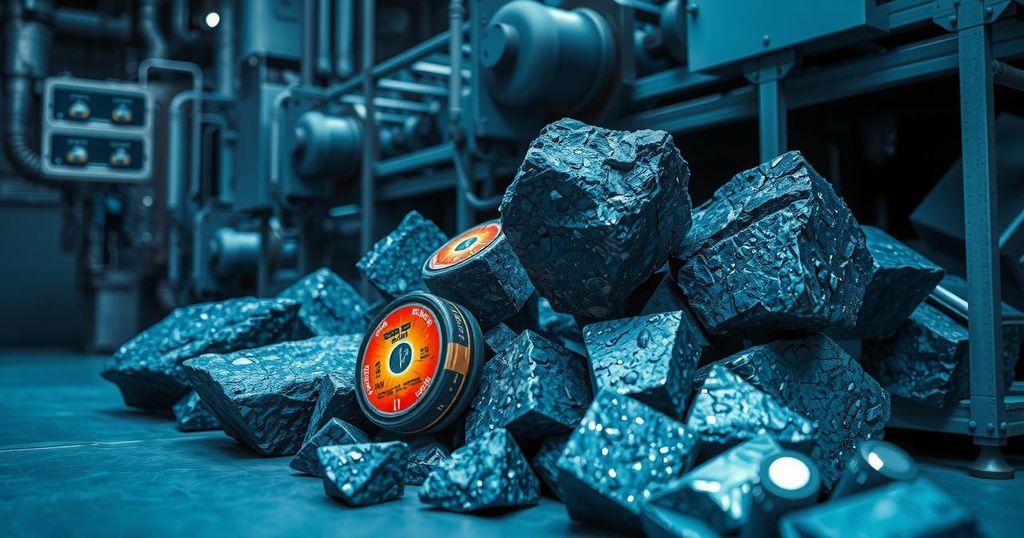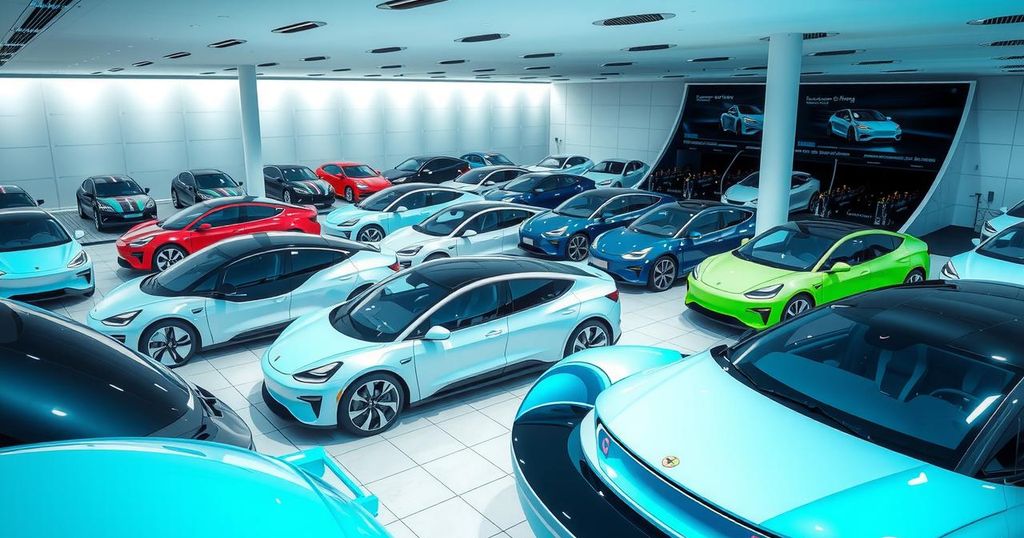Cars
AFRICA, ARGENTINA, ASIA, AUSTRALIA, AUTOMOTIVE INDUSTRY, BOLIVIA, CHILE, CHINA, CONGO, CONGO - KINSHASA, CONGO (KINSHASA), CUBA, EXPORT, FOREIGN INVESTMENT, GEOLOGICAL SURVEY, INDIA, INDUSTRY, JAPAN, KINSHASA, MEXICO, MINING, NATIONAL GEOSPATIAL - INTELLIGENCE AGENCY, NORTH AMERICA, OCEANIA, SOLAR POWER, SOUTH AMERICA, TEARLINE, TRIANGLE, U. S. GEOLOGICAL SURVEY, UN COMTRADE, UNITED STATES
Michael Grant
0 Comments
China’s Dominance in Global Battery Minerals Trade
In 2023, China dominated the global trade of battery minerals, comprising 44% of imports and 58% of exports. The country plays a crucial role in the supply chain for essential minerals such as lithium, cobalt, and graphite. Significant production and processing capacities bolster China’s position as a leader, but recent export restrictions may impact future graphite exports. As global demand for battery technologies rises, China’s influence on this market continues to deepen.
China has firmly established itself at the heart of the global battery supply chain, dominating both imports and exports of key battery minerals. According to recent United Nations Comtrade data, in 2023 China imported nearly 12 million short tons of battery minerals, making up 44% of interregional trade. Additionally, it exported almost 11 million short tons, which accounts for a staggering 58% of that trade. The implications of these numbers reflect not only the scale of China’s operations but also its central role in the battery market as the demand continues to rise for electric vehicles and energy storage solutions.
Focusing on three essential minerals—lithium, graphite, and cobalt—it’s clear that they play vital roles at various stages of battery production. Lithium is often extracted from brine or hard rock sources, while cobalt primarily comes as a byproduct from nickel and copper mining. Graphite, on the other hand, can be sourced either through natural mining or synthetic production. Interestingly, in 2023, China produced around 18% of the world’s mined lithium and controlled 25% of mining capacity globally.
Furthermore, China’s investment in lithium extraction has extended to the ‘lithium triangle’ in South America, where it has made significant inroads in Argentina. This region comprises roughly half of the world’s lithium resources. According to the U.S. Geological Survey, in 2024, China produced a whopping 79% of global natural graphite, while the United States did not produce any. Furthermore, Chinese companies dominate cobalt production in Congo-Kinshasa, controlling 80% of production in a country that houses more than half of the world’s cobalt.
But it is not just about production; the transit of raw minerals is a critical aspect of the trade. In 2023, China was the major player in the global import trade, accounting for an impressive 46% of raw battery mineral imports. Australia, as the largest producer of lithium, sent most of its exports to China. China, Australia, and other regions in Asia and Oceania, including India and Japan, together represented a significant 71% of global raw battery mineral trade.
Processing is another area where China excels, handling over 90% of the world’s graphite. In 2022, Chinese companies led the world with two-thirds of the processing capacity for cobalt and lithium. In terms of processed minerals, China imported 20% of such materials, primarily cobalt from African sources, while exporting 58% of these processed minerals, especially synthetic graphite, to other parts of Asia and Oceania. However, recently implemented export restrictions on graphite products may decrease its exports in the near future.
China’s influence extends into the manufacturing of battery materials, which are determined by the specific chemical compositions of the batteries themselves. In 2023, China was responsible for 53% of exports in battery materials. These processed minerals are crucial in making battery components, from electrodes to electrolytes. For example, lithium-ion batteries typically incorporate a graphite anode, a lithium-based cathode, and a lithium salt electrolyte. In 2022, China produced a staggering 85% of the world’s anodes, 82% of electrolytes, 74% of separators, and 70% of cathodes. Moreover, in 2023, the country claimed 74% of the world’s battery pack and component exports and controlled nearly 85% of global battery cell production by monetary value.
In conclusion, it is indisputable that China plays a pivotal role in the global battery minerals trade, influencing all aspects from production to processing and manufacturing. This dominance signifies not just a competitive edge in the booming battery market but also points to the challenges that the rest of the world may face in achieving a sustainable and self-sufficient supply chain for battery production.
China’s extensive involvement in the global battery mineral trade is monumental, controlling production, processing, and export of vital materials. Its dominance is evident across key sectors such as graphite, lithium, and cobalt, affecting global supply chains significantly. This scenario raises questions about future dependencies and market dynamics as demand for battery technologies grows. Understanding these shifts is essential for stakeholders looking to navigate the evolving landscape of battery production.
Original Source: batteriesnews.com




Post Comment